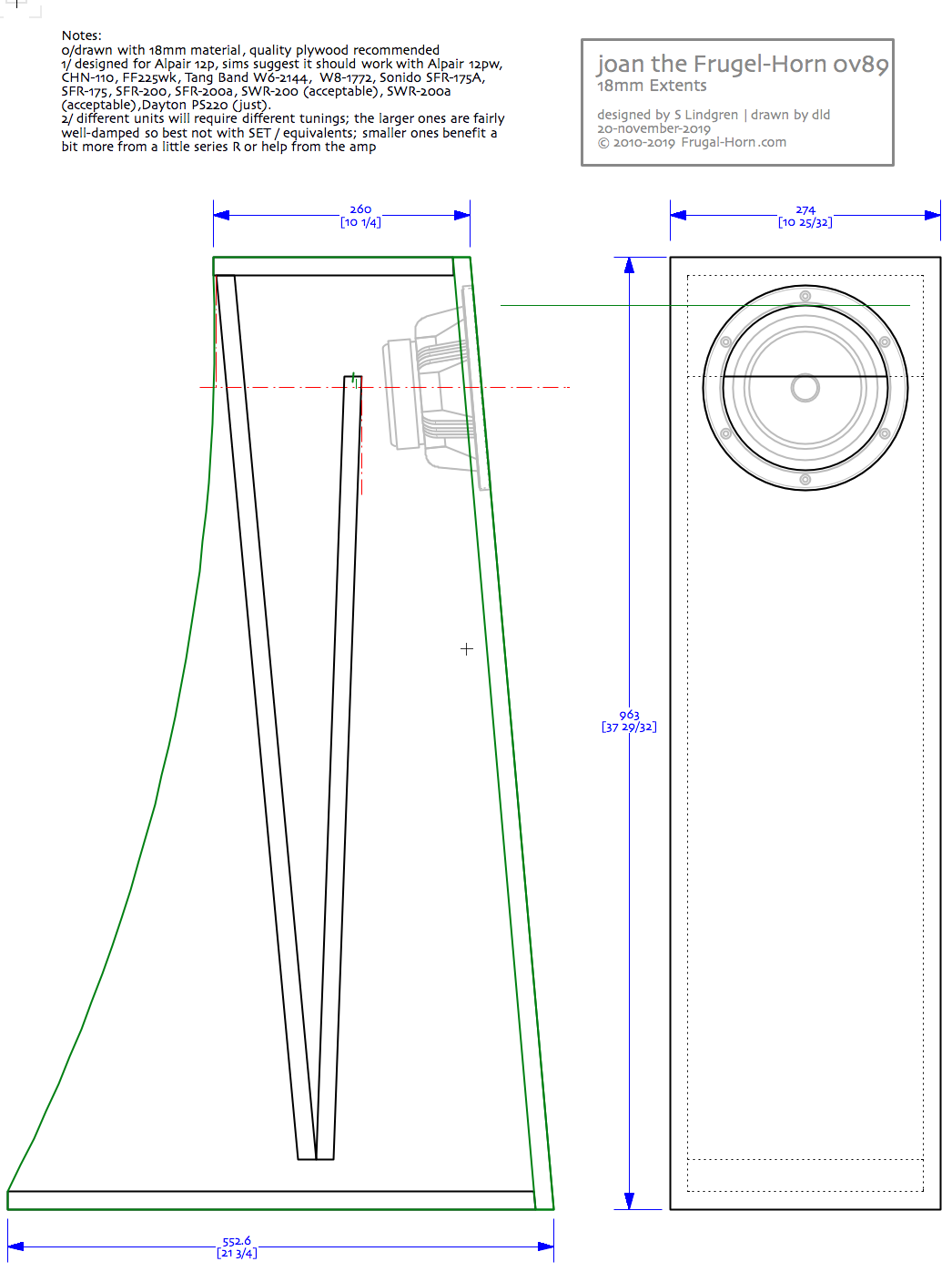I am new to full range speakers. I am thinking of trying a pair of Markaudio Alpair 12P. On the Markaudio website there are suggestions for different cabinets. If I do it, it will be a back-loaded horn. But 2 of the cabinets that is proposed, shows a version with a resistance in serie (one with 2.2 ohms and one with 4 ohms). It then says as an explanation that "Design includes resistance to artificially raise effective driver Qst and lower Fb".
But what would be the idea in that. I could understand if there was something that smoothed out the frequency curve, but pure resistance just makes the driver less efficient. Often, it is because of high efficiency and the fact that X-over components can be completely avoided that you choose a full-tone unit. What am I missing.
But what would be the idea in that. I could understand if there was something that smoothed out the frequency curve, but pure resistance just makes the driver less efficient. Often, it is because of high efficiency and the fact that X-over components can be completely avoided that you choose a full-tone unit. What am I missing.
if I'm not mistaken it sounds like he may be referring to the following notations:
https://www.markaudio.com/wp-content/uploads/2022/08/Levante.png
Levante: R1 = 3 x 12Ω 20w
or may be substituted for single 50w (min) 4Ω power resistor
https://www.markaudio.com/wp-content/uploads/2022/08/Libeccio.png
Libeccio: R1 = 3 x 6.8Ω 20w
or may substitute for single 50w 2.2Ω power resistor
or possibly https://www.markaudio.com/wp-content/uploads/2021/08/Juliet-Alpair-12P-classic-DCR.png
Juliet design assumes amplifier with 1/2Ω series R
https://www.markaudio.com/wp-content/uploads/2022/08/Levante.png
Levante: R1 = 3 x 12Ω 20w
or may be substituted for single 50w (min) 4Ω power resistor
https://www.markaudio.com/wp-content/uploads/2022/08/Libeccio.png
Libeccio: R1 = 3 x 6.8Ω 20w
or may substitute for single 50w 2.2Ω power resistor
or possibly https://www.markaudio.com/wp-content/uploads/2021/08/Juliet-Alpair-12P-classic-DCR.png
Juliet design assumes amplifier with 1/2Ω series R
Last edited by a moderator:
Scott’s, “so you want a big box" series for the A12pw.
Having played with series resistance i figure it takes more away than it brings.
If you do a reflex i would suggest a proper size box, if you want the bass extention then something like Pensil or Joan.
And given you suggest a horn, you would not need any extra R.
dave
Having played with series resistance i figure it takes more away than it brings.
If you do a reflex i would suggest a proper size box, if you want the bass extention then something like Pensil or Joan.
And given you suggest a horn, you would not need any extra R.
dave
how about Scott's Triton transmission line box for Alpair 12p, it is a small box and there are no footnotes for extra R
Any idea what to expect of Triton TL/12p bass extention?
https://www.markaudio.com/wp-content/uploads/2022/08/Triton-Alpair-12P-RTL.png
Any idea what to expect of Triton TL/12p bass extention?
https://www.markaudio.com/wp-content/uploads/2022/08/Triton-Alpair-12P-RTL.png
Last edited by a moderator:
Given how fantabulous the 10p is in the FHXL, there's no reason to believe the 12p can't be almost as good in a Joan.
jeff
jeff
That doesn't seem bad for a bookshelf monitor size box suitable for use in a small roomDid a quick HR sim and it's a T/S ~max flat, 58 Hz Fb once damped (no series R), so to get to Fs will require either series R in a bigger box or some form of BLH since it has horn driver specs.
Joan is the cousin of the smaller Frugel-Horns. To keep the size reasonable she has a different alignment with less gain, the rationale that these largwe drivers can get away without.
dave
dave
Thanks for the many answers. Yes, it is like mp9 says the 2 constructions I mention.
If I have to conclude on what someone has answered, the resistor is used to get deeper bass when you used a small enclosure. In my naivety, I thought that a resistor just was lowering it all, in contrast if you have a correction notch, you would e.g. attenuated from 100 Hz and up (just as an example), or was more specific and removed some peaks, which a full-tone driver will always have.
If I have to conclude on what someone has answered, the resistor is used to get deeper bass when you used a small enclosure. In my naivety, I thought that a resistor just was lowering it all, in contrast if you have a correction notch, you would e.g. attenuated from 100 Hz and up (just as an example), or was more specific and removed some peaks, which a full-tone driver will always have.
Added R is too get more bass out of a too large enclosure. A12p is normally suited to something like max 17 litres or the alignments start going wonky.
Thinking about this, if you have an amplifier with an Rout similar to the series resistance bank and lose the bank. King of Swinger's might give some more insight.
dave
Thinking about this, if you have an amplifier with an Rout similar to the series resistance bank and lose the bank. King of Swinger's might give some more insight.
dave
Dave, I'm confused, in past post you have said A12p needs a larger box like Pencil (Super Pencil) and Joan, yet I can't recall ever reading of wonky alignments with those boxes. Is the R accounted for in the design/stuffing of A12p Pencil (Super Pencil) MLTL and Joan horn?
Also Dave, Triton Transmission Line 12p box is ~ 32 Liters, am I to infer from what you wrote above that the alignments get wonky? Triton plan sheet has no footnotes about adding R
Also Dave, Triton Transmission Line 12p box is ~ 32 Liters, am I to infer from what you wrote above that the alignments get wonky? Triton plan sheet has no footnotes about adding R
- Home
- Loudspeakers
- Full Range
- Resistor with Alpair 12P
